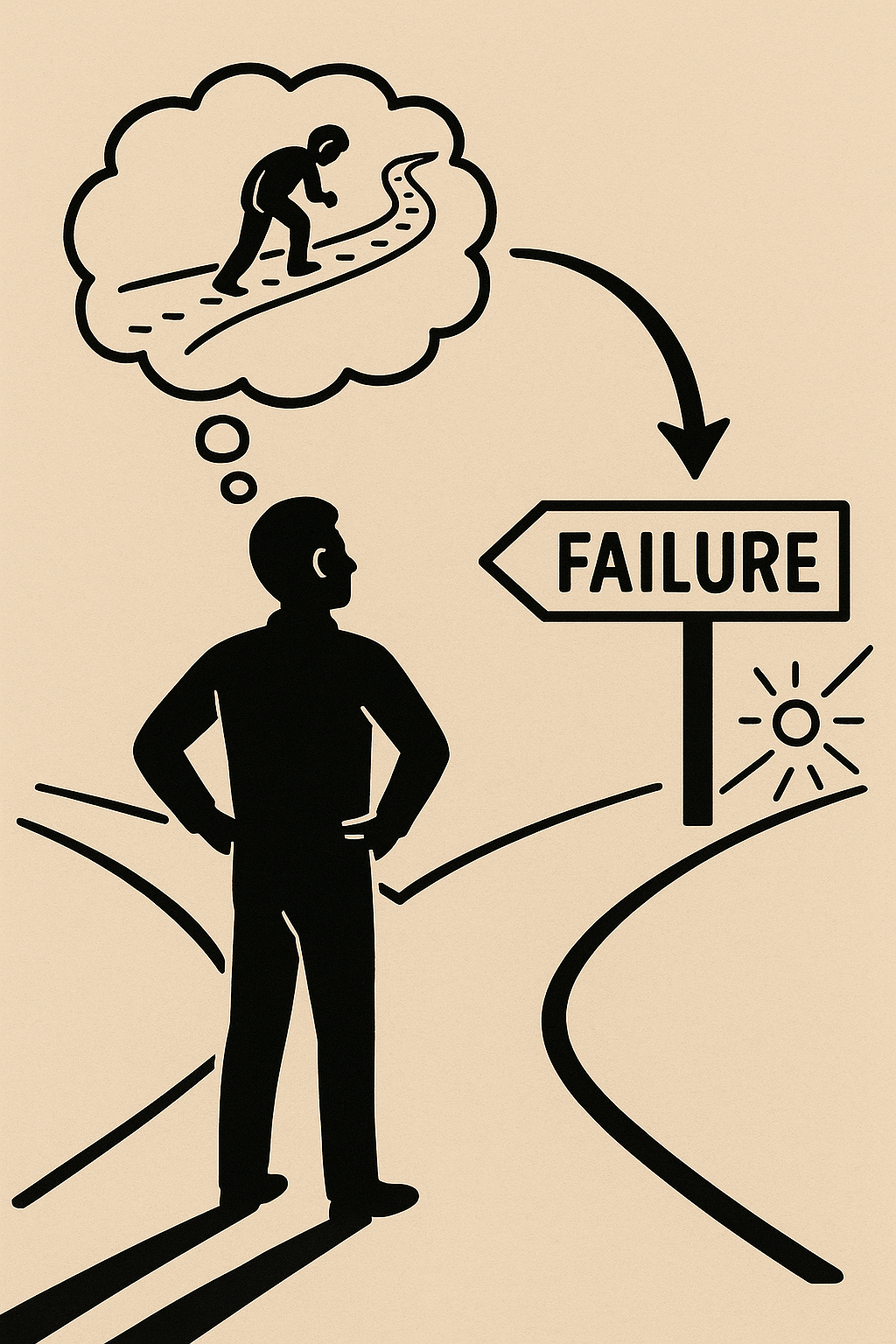You’ll most likely fail in your current form—with whatever you are doing. Failure and success come highly charged emotionally. Feeling worried, anxious, sad, or stressed about failure (or success) is normal. Experience those emotions, but don’t hold onto them—let them flow and let them go. In the moment of clarity you’ll get from letting go, you’ll be able to try the the following excercise.
You’ll need to put on your big?boy pants and accept that failures happen. Sometimes the best team loses the cup final—fact. Believing anything else is denial. (At a minimum, you might realise you’re in denial and are heavily relying on hope as a strategy—if you’ve even got this far, you’ve already increased your chance of success.)

See the power of failure.
By going through any process that ends in failure, the version of you that emerges will be somewhat more aware and informed of new things—experiences you didn’t have before.
To put it simply—with hindsight we might all have done things differently. When we’ve failed before, we’ve been able to identify the key points of failure. We’ve said things like, “If only I had known…” After every journey we experience, there are new things—information we didn’t have before. That’s the opening thing to grasp.
Go on a Journey into the future.
Instead of hindsight and regret, we can flip it into foresight…
Let’s say that super brain of yours has some awareness and is capable of introspection and logical learning, without any fear of superstitious forces intervening.
Try this exercise.
Read through the Q&A below with our hypothetical candidate first
—you’ll need your imagination switched on, do it for yourself afterward.
1. What journey are you going on?
What’s something you’re going to do?
“I’m going to run for president.”
2. Fast?forward to the end of that journey.
Imagine this: it doesn’t happen—you failed.
In that future frame of mind, what experiences did you have on the journey?
“I spoke to a lot of people.”
“I did so much media, was so tired of their bland questions.”
“I worked on so much content.”
“I had to learn the process fast.”
“I had to catch a lot of mud thrown in my face.”
…etc.
3. What are the things you wish you had known?
The things that “with hindsight” you’d do differently:
“That TV debate—I would have been as cool as Gandhi; I wouldn’t have taken their bait. I see now it was a trap.”
“I would have clarified my vision—I missed the chance to tell everyone how my ideas could make their lives better.”
“I came across as a bit desperate sometimes; that was just passion under stress.”
“I would have bought a few sharp suits; I didn’t realize how important the ‘uniform’ of that game was.”
“It was over so quickly—I’d have ended stronger so my platform would be more solid; what’s worse is, I don’t think they like me now.”
4. What’s a no?effort or low?effort action you should have taken with hindsight?
Some things you could have done if you had the benefit of hindsight.
“I could buy a suit or two—a green one, an Irish?made one!”
“I’d repeat one very simple point: one vision to inspire people, not confuse them by recounting problems.”
“I’d…”
Try your own journey with the 4 questions.
Hindsight becomes foresight.
Simple as that? It seems almost too obvious. In reality most of us are afraid of failure. That’s normal as I mentioned but in order to increase the probability of success – the logical thing to do is to reduce the chance of failure.
For the spooked—no, this is not visualizing failure, nor is it jinxing yourself somehow. You can go and hide away from failure – You might win—anything can happen. The second?best team does win the cup final sometimes. So if hope works for you, go right ahead.
You can talk through any process in your head in advance and change a simple thing before it becomes a reason you failed. Doing that will reduce your chance of failure.
If you”ve done the exercise ask:
“What minimum adjustment could I make now—to at least tilt or nudge, or better face in the direction of that thing I want, and increase the chance of the outcome I want?”
What’s the minimum? Any adjustment you can make adds up; this is simply about decreasing your failure probability. It’s simple maths. The smallest, I would say, might be: can you make tiny adjustments so that, if you fail, you at least land well and the new outcome is more favorable? At least don’t inconvenience yourself by setting yourself back—a decent failure can set you right up for success on the next go.
